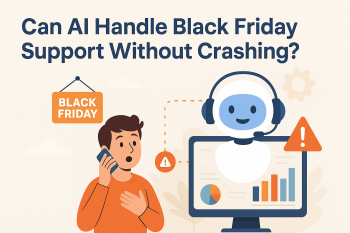In this digital world, single-vendor e-commerce platforms have emerged as powerful tools for businesses to showcase their products and connect with customers in a personalized way. From concept to reality, crafting a successful single-vendor e-commerce experience involves careful planning, strategic execution, and continuous refinement. This article explores the essential steps of creating and optimizing Single Vendor E-commerce Experiences like WooCommerce.
What is Single Vendor E-commerce?

Single vendor e-commerce refers to online retail platforms operated by a single entity or merchant. Unlike multivendor marketplaces like Amazon, where multiple sellers list their products Single Vendor E-commerce Experiences feature products exclusively from one seller. These platforms provide you complete control over your brand, product assortment, pricing, and customer experience.
Read More: Mastering E-commerce Expert Tips for Seamless Development
Primary Stages of Developing a Single Vendor E-commerce

Define Your Brand Identity
Establish a clear and compelling brand identity that reflects your unique value proposition, mission, and target audience. Define your brand voice and visual identity to create a memorable customer experience.
Read More: A Step-by-Step Guide to Website Optimization Strategies for 2024
Choose the Right E-commerce Platform
Select an e-commerce platform that aligns with your business goals & budget. Consider ease of use, customization options, scalability, and integration capabilities when choosing the platform for your Single Vendor E-commerce store.
Read More: 10 Essential Tips for Launching Your E-commerce Journey with WooCommerce
Design User-Centric Website
Design a user-friendly & visually appealing website that provides a smooth shopping experience for customers. Optimize navigation, product search functionality, and checkout process to streamline the buying journey. Incorporate responsive design principles to ensure compatibility across devices & screen sizes.
Curate High-Quality Product Listings
Showcase your products by creating detailed and enticing product listings. Use high-quality images, descriptive product descriptions, and persuasive copy to highlight the product’s features & benefits. Incorporate user-generated content like reviews to build trust and credibility with potential buyers.
Must Read: The Future of E-commerce: Embracing SaaS Solutions
Implement Secure Payment Processing
Prioritize security and trust by implementing robust payment processing solutions that protect customer data & transactions. Choose reputable payment gateways that offer encryption, fraud prevention measures, and compliance with PCI-DSS standards to ensure secure online transactions.
Optimize for Search Engines
Improve the visibility of your Single Vendor E-commerce store in search engine results by implementing search engine optimization (SEO) techniques. Optimize product pages, metadata, and content for relevant keywords – and also put compelling product descriptions that resonate with both search engines and customers.
Read More: Why is 2024 a Great Year to Start Your E-commerce?
Leverage Data Analytics
Analysis of customer preferences can help you keep you in keeping customers happy. Use analytics tools to track website traffic, conversion rates, and sales performance, and leverage these insights to optimize marketing strategies.
Provide Exceptional Customer Support
Deliver outstanding customer support to cultivate loyalty and satisfaction among your customers. Offer multiple channels for customer communication, such as live chat, email, and phone support, and ensure timely responses to inquiries and requests. Resolve customer issues promptly and strive to exceed their expectations at every touchpoint. You can also integrate & deploy modern Chatbots to automate this process. You can connect with top AI integration services agencies like Provis Technologies for AI integration in your e-commerce.
Drive Traffic & Sales
Implement a complete marketing strategy to drive traffic & generate sales for your online business. Use social media marketing, email campaigning, content, and influencer partnerships – to reach & promote your business to your target audience.
Read More: Color Palette Generators for Website
Continuously Improve the Store
Embrace a culture of continuous improvement by monitoring performance metrics & collecting customer feedback. Stay responsive to market trends, technological advancements, and customer preferences – and continuously strive to enhance the overall shopping experience for your customers.
Bottom Line
You can follow these essential steps to optimize your e-commerce store. Prioritizing user-friendly design, brand authenticity, and customer satisfaction is crucial to achieving sustainable growth in e-commerce. Also, you can connect with Provis Technologies, a top e-commerce development agency – for your e-commerce development, maintenance, & optimization requirements.
FAQs
Single vendor e-commerce refers to online retail platforms operated by a single entity or merchant, offering products exclusively from one seller. WooCommerce, Shopify, and more stores are examples.
In single-vendor e-commerce, all products are sourced from a single seller. Multivendor marketplaces feature products from multiple sellers.
Single Vendor E-commerce Experiences offer businesses total control over their brand, product assortment, pricing, and customer experience.
When selecting an e-commerce platform, consider customization options, scalability, and integration capabilities.
Optimize your Single Vendor E-commerce Experiences website for search engines by implementing SEO strategies, such as optimizing product pages and metadata for relevant keywords.
Key metrics to track include website traffic, conversion rates, sales performance, customer satisfaction, and return on investment (ROI).
Written By
Author's Picks
- What is Micro SaaS & How to Build a Micro SaaS in 2025
- 25/02/2025
- Guide for Security Testing for Ecommerce Websites in 2025
- 01/05/2025
- Top 15 Software Development Trends to Follow in 2025
- 31/01/2025
Categories
- AI for Startups
- AI in Web Development
- AI Integration
- AI Platforms
- AI Prompt
- AI Tools
- AI Trading Software
- Android App
- Android vs iOS Development
- Angular
- API
- API Development
- App
- app development
- App Idea
- App User Feedback
- Application
- Artificial Intelligence
- Audit Services
- Automotive Industry
- Awards and Recognition
- Business Consulting
- Business Website
- Chatbots
- CRM
- CRM for Financial Advisors
- Custom CRM
- Custom SaaS
- Custom Website
- Customer Service
- dashboard design
- Developing a Mobile App
- Digital Business
- E-commerce
- EMR Integration
- Finance
- Financial Advisors
- Financial Advisors
- GIT
- Health Insurance
- iOS App
- iOS App Development
- IoT Mobile App Development
- IoT Platforms
- IT Audit Services
- IT Consulting
- IT Strategies
- Java Development
- Laravel
- Lean Canvas
- Learning Management System
- Logistics Apps
- Mobile App Development
- MVP
- Native App
- News Aggregator Site
- OTT
- Outsourcing IT
- Payment Gateway
- predictive analysis
- Product Launch Strategy
- Progressive Web App (PWA)
- Prototype
- Recommender Systems
- Ruby
- SaaS
- SaaS Application
- SaaS Business
- SaaS Company
- SaaS Development
- SaaS Product
- SaaS Project
- Sales Funnel
- SEO
- Shopping Cart
- Software Development
- SSL and TLS
- Startup Checklist
- Technology
- Tetradic Color Scheme
- UI/UX Design Company
- Unit Testing
- User Flow
- User Testing
- Web Development
- Web Performance Optimization
- website Maintenance Services
- Website Migration Service
- Website Speed Optimization
- WooCommerce
- WordPress





